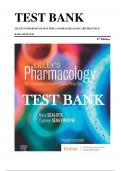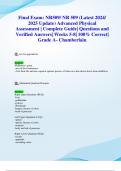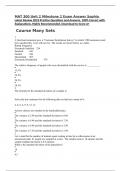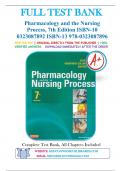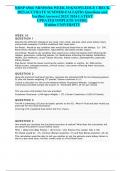Exam (elaborations)
NR568 / NR 568 Midterm Exam (Latest 2024 / 2025): Advanced Pharmacology for the Adult-Gerontology Primary Care Nurse Practitioner|Questions and Verified Answers - Chamberlain
- Course
- Institution
NR568 / NR 568 Midterm Exam (Latest 2024 / 2025): Advanced Pharmacology for the Adult-Gerontology Primary Care Nurse Practitioner|Questions and Verified Answers - Chamberlain
[Show more]





